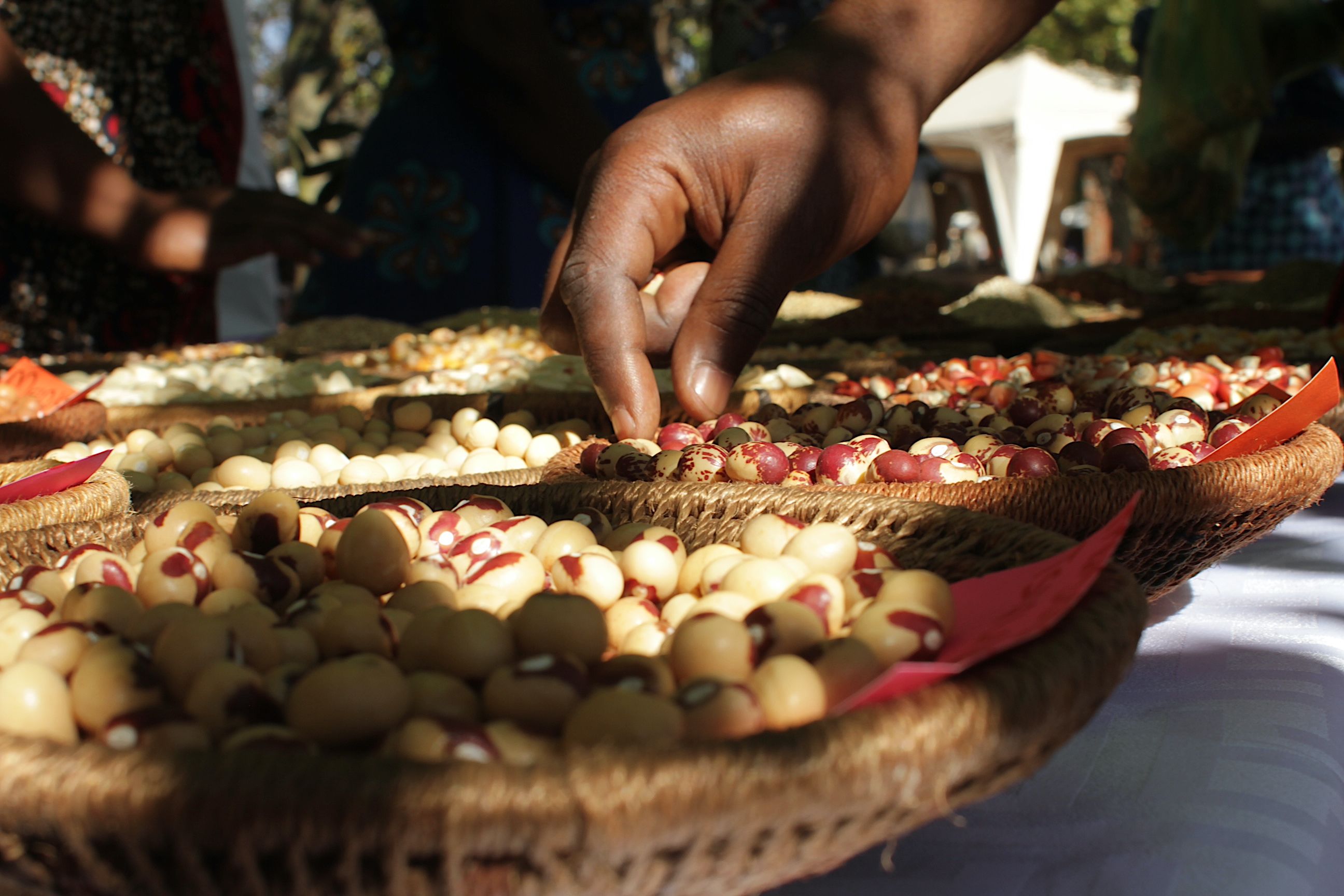Community Food Forests in New Brunswick: A Model for Advancing Sustainable Development Goals
Introduction: A Localized Approach to Global Goals
In New Brunswick, community-led initiatives known as “food forests” are emerging as practical models for achieving several United Nations Sustainable Development Goals (SDGs). The St. Mary’s Community Food Forest, located in the Fredericton area, exemplifies this movement by creating a sustainable, accessible food source that strengthens community resilience and environmental health. These projects directly address critical global targets related to hunger, sustainable cities, responsible production, and terrestrial ecosystems.
The St. Mary’s Food Forest: A Case Study in Sustainable Action
The St. Mary’s Community Food Forest operates on a principle of open access, providing free, organic produce to the public. This initiative, managed by Andrew Mathis, is a core component of a province-wide tour designed to promote the food forest concept. The project’s design and operation align with multiple SDGs.
- Project Definition: A food forest is defined by co-organizer Sima Usvyatsov as “a diverse planting of mostly food-bearing plants that aims to mimic a natural ecosystem.”
- Core Mission: The primary objective is to function as a food security project, making fresh food accessible to all community members, particularly those without private land for cultivation.
- Operational Model: The forest operates on a shared-harvest basis. Individuals can harvest produce without being required to plant, and those who do plant contribute to a communal resource.
Direct Contributions to Sustainable Development Goals (SDGs)
SDG 2: Zero Hunger
The food forest model is a direct response to food insecurity, a primary target of SDG 2. By providing unrestricted access to nutritious food, the project contributes to ending hunger and ensuring all people have access to safe and sufficient food year-round.
- Enhanced Food Access: The project eliminates economic barriers by offering produce for free, 24 hours a day.
- Nutritional Diversity: A wide variety of crops are cultivated to ensure a balanced and nutritious diet for the community. Available produce includes:
- Fruits: Apples, peaches, pears, cherries, kiwi, and various berries.
- Vegetables: Squash, carrots, and string beans.
- Sustainable Food Production: The organic, ecosystem-based approach ensures the long-term viability of the food source.
SDG 11: Sustainable Cities and Communities & SDG 15: Life on Land
Food forests transform public spaces into productive, inclusive, and green environments, directly supporting the aims of SDG 11. Simultaneously, by mimicking natural ecosystems, they enhance local biodiversity, contributing to SDG 15.
- Inclusive Public Spaces (SDG 11.7): The forest serves as an accessible green space that fosters community interaction. The planned construction of a community pizza oven is intended to further establish the area as a social hub.
- Urban Greening and Resilience (SDG 11): These projects integrate sustainable agriculture into community landscapes. The growing popularity is evidenced by municipal involvement, such as the planting of 30 fruit trees in Fredericton’s Wilmot Park.
- Biodiversity and Ecosystem Health (SDG 15): The cultivation of diverse species, including a Japanese heartnut tree, bamboo, and willow, alongside traditional crops, creates a robust ecosystem that supports various life forms and promotes ecological balance.
SDG 17: Partnerships for the Goals
The success and expansion of the food forest movement in New Brunswick are built on collaboration between individuals, community groups, and municipalities, reflecting the spirit of SDG 17.
- Community-Led Education: The New Brunswick Food Forest Tour, organized by Mathis and Usvyatsov, is a key partnership initiative. With 17 gardens on the tour and 150 registered participants, it serves as a platform for knowledge exchange and capacity building.
- Multi-Stakeholder Engagement: The initiatives involve partnerships between community organizers, local institutions like the St. Mary’s Anglican Church, and municipal governments, demonstrating a collective effort toward a common sustainability goal.
- Building Networks: Sima Usvyatsov emphasizes the importance of “community building” and peer-to-peer learning as a “tremendous thing” fostered by these collaborative tours and workshops.
1. Which SDGs are addressed or connected to the issues highlighted in the article?
The following SDGs are addressed in the article:
- SDG 2: Zero Hunger
- The article’s central theme is the creation of community food forests as a “food security project” to provide free, accessible, and nutritious food to the community.
- SDG 11: Sustainable Cities and Communities
- The food forests are described as accessible community spaces that enhance urban green areas, making them more inclusive and productive for residents.
- SDG 12: Responsible Consumption and Production
- The initiative promotes sustainable, local food production and educates the community on sustainable lifestyles through tours and workshops.
- SDG 15: Life on Land
- The food forest model is defined as a system that “aims to mimic a natural ecosystem,” promoting biodiversity through “diverse planting.”
2. What specific targets under those SDGs can be identified based on the article’s content?
The following specific targets can be identified:
- Target 2.1: End hunger and ensure access by all people… to safe, nutritious and sufficient food.
- The article highlights that the food forest provides “organic, fresh food at any time of day — for free,” directly addressing food access and security for the community.
- Target 2.4: Ensure sustainable food production systems and implement resilient agricultural practices.
- The food forest is described as a “diverse planting of mostly food-bearing plants that aims to mimic a natural ecosystem,” which is a model for sustainable and resilient agriculture.
- Target 11.7: Provide universal access to safe, inclusive and accessible, green and public spaces.
- The project creates public green spaces that are open to everyone and are designed to be highly accessible, as stated: “these community spaces that don’t have individual plots really make it very accessible.”
- Target 12.8: Ensure that people everywhere have the relevant information and awareness for sustainable development.
- The province-wide tour of 17 gardens and workshops are explicitly mentioned as a “learning opportunity” and a way for people to “learn from each other,” raising awareness about sustainable food systems.
- Target 15.5: Halt the loss of biodiversity.
- By creating diverse plantings with a variety of fruits, vegetables, and trees (like apples, kiwi, heartnut, etc.), the food forest actively supports and increases local biodiversity.
3. Are there any indicators mentioned or implied in the article that can be used to measure progress towards the identified targets?
Yes, the following indicators are mentioned or implied:
- Number of community food forests: The article mentions a province-wide tour of “17 such gardens” and a new municipal project in Fredericton’s Wilmot Park. This is a direct indicator of the expansion of these sustainable food systems and green spaces (relevant to Targets 2.4, 11.7).
- Variety of food produced: The article lists a wide range of produce, including “apples, kiwi, peaches, pears, cherries and berries,” as well as “squash, carrots and string beans,” and even a “heartnut tree.” This diversity indicates progress towards resilient agriculture and biodiversity (Targets 2.4, 15.5).
- Number of people engaged in learning activities: It is stated that “about 150 people are registered” for the food forest tours. This number serves as an indicator for measuring awareness and education efforts (Target 12.8).
- Community infrastructure development: The plan to build a “pizza oven” to “draw people into this space” is an indicator of efforts to increase the use and inclusivity of the community space (Target 11.7).
- Accessibility of food: The core principle that food is available “for free” and that community members “don’t have to plant something to be able to harvest” is a qualitative indicator of ensuring access to food for all (Target 2.1).
4. Create a table with three columns titled ‘SDGs, Targets and Indicators’ to present the findings from analyzing the article.
| SDGs | Targets | Indicators |
|---|---|---|
| SDG 2: Zero Hunger | 2.1: End hunger and ensure access to food.
2.4: Ensure sustainable food production systems. |
Provision of free, organic food. Variety of food grown (fruits, vegetables, nuts). Number of food forests established (17 on tour). Adoption of the food forest model which mimics a natural ecosystem. |
| SDG 11: Sustainable Cities and Communities | 11.7: Provide universal access to green and public spaces. | Creation of accessible community spaces open to all. Number of municipal food forest projects (e.g., Wilmot Park). Development of community infrastructure (pizza oven) to increase space utilization. |
| SDG 12: Responsible Consumption and Production | 12.8: Promote awareness for sustainable lifestyles. | Number of people registered for educational tours (150). Hosting of gardening workshops. |
| SDG 15: Life on Land | 15.5: Halt biodiversity loss. | Cultivation of a diverse range of plant species (fruits, vegetables, nuts, trees like heartnut, bamboo, willow). Implementation of an agricultural model that mimics a natural ecosystem. |
Source: cbc.ca






